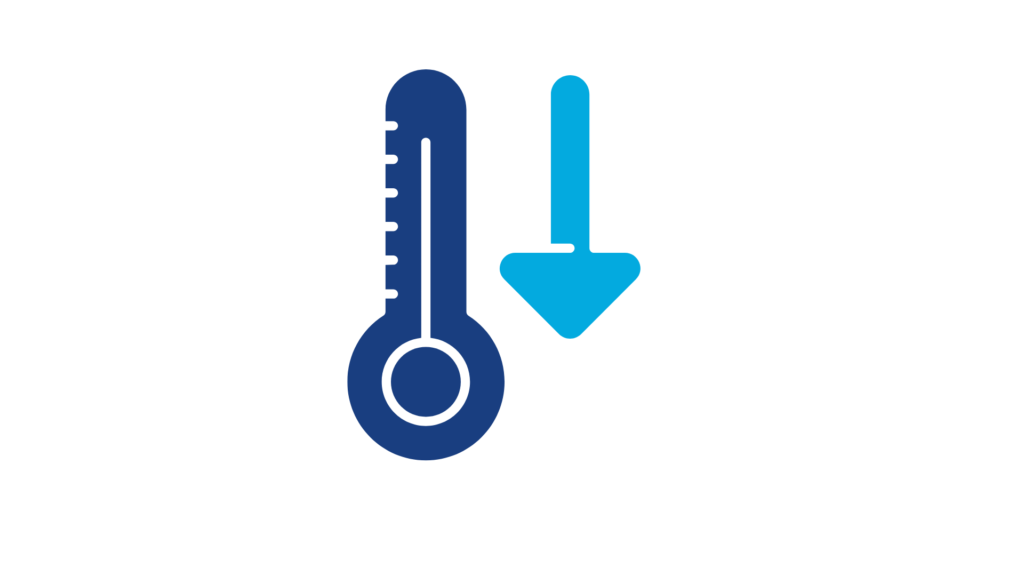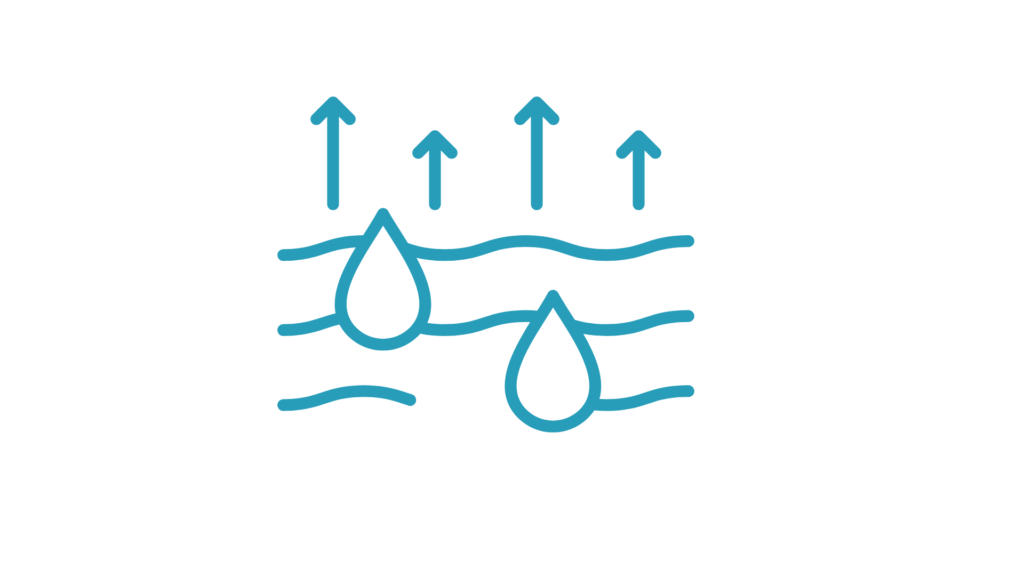An evaporative cooler uses the natural ability of water to absorb heat from the surrounding air and evaporate, creating a cooling effect. These coolers replicate this natural process and enhance it with technology to deliver efficient and sustainable cooling.
The core principle of an evaporative cooler is a continuous flow of warm air passing over a humid surface. This maximises contact between the warm air and water, encouraging heat transfer from the air to the water. The system accelerates water evaporation and optimises heat extraction from the air, increasing the cooling efficiency of the airflow.
As water evaporates, it humidifies the air at a molecular level. The evaporated water molecules behave like gas and are invisible, meaning an evaporative cooler does not generate mist – a mixture of air and water droplets – setting it apart from mist cooling systems.

The cooled, moisture-enriched air then circulates throughout the space to be cooled before being exhausted. The principle behind evaporative coolers is an open system with constant air renewal, requiring open doors or vents and about 80% of the supplied air to be exhausted for optimal performance.
How an Evaporative Cooler is Configured and Operates
Evaporative coolers intensify natural evaporation by optimising contact between air and water through an evaporative medium.
Airflow in the evaporative cooler
A fan maintains a steady flow of warm air, providing energy for evaporation. It draws outside air in through a filter before entering the cooler.
The fan pushes the air through a water-saturated evaporative panel, allowing water to evaporate into the hot air. This cools and humidifies the air. Starting temperatures between 25°C and 40°C with relative humidity from 30% to 50% can be reduced by 5°C to 11°C. The drier and warmer the air, the greater the cooling effect; for example, average temperature drops around 7°C are typical in mainland France.
The outgoing air absorbs water vapor, increasing humidity in the cooled space depending on external climate and the desired temperature.
The fan distributes this cooled air through the space, circulating the air volume every 3 to 5 minutes and removing heat. The air is then exhausted through openings or ventilation, with air renewal rates of 10 to 20 times per hour.
While basic mobile evaporative coolers simply move cooled air around, fixed roof or wall-mounted evaporative coolers may use advanced diffusion systems like multi-way plenums, supply grilles, or textile ducts.
Water Flow in the Evaporative Cooler
A pump circulates water from a reservoir at the base of the cooler, generating a regulated flow of cold water, which is sprayed evenly over the evaporative media via a distributor. The water then flows by gravity through the media walls, saturating them. Un-evaporated water collects at the bottom and returns to the tank.
Except for evaporation, water consumption is minimal, with excess water drained safely into wastewater systems.
Heat Transfer Through Evaporation

The heat exchange within an evaporative cooler occurs at the wet surface of the evaporative media, where warm air comes into direct contact with water. In this system, the water flows perpendicularly to the incoming hot air, allowing maximum interaction for efficient heat transfer. This contact enables water molecules to absorb energy and transition from a liquid to a gaseous state, driving the cooling process.
The evaporative panel – typically designed with a honeycomb or multi-layered structure – enhances this efficiency by:
- Modifying vertical water circulation to improve absorption into the media walls, with the saturation coefficient indicating the material’s capacity to retain moisture.
- Altering the horizontal direction of airflow to increase turbulence and contact with the media.
- Expanding the total surface area for air and water contact, significantly improving evaporation rates.
This structural design boosts air-water mixing, maximising the effectiveness of the evaporative cooler and ensuring high cooling performance.
Sizing an Evaporative Cooler System
The design of an evaporative cooler system considers key climate factors at the installation site in summer, including outdoor temperature and relative humidity, building orientation, internal heat loads from operations and equipment, ventilation characteristics, the required air change rate, and the desired indoor climate conditions.
This helps determine:
- The cooler’s specifications (such as plenum height for roof-mounted units).
- The number of units needed, especially for large spaces.
Conclusion: Simple Operation and Effective Cooling with Evaporative Coolers
Evaporative cooling works by maximising air and water contact to boost evaporation and reduce temperature. The system consists of a fan and filter for air, a water pump and reservoir, and evaporative media for heat exchange. Proper sizing based on climatic conditions ensures optimal cooling, making evaporative coolers a sustainable, efficient solution for cooling industrial and commercial spaces.
If you’re considering an evaporative cooler for your facility and want to ensure the system is correctly specified for your building and climate, our team at McCarthy Hire is here to help.
We offer expert advice, tailored solutions, and high-performance cooling equipment for a wide range of industrial and commercial environments. Contact us today to discuss your requirements and find out how evaporative cooling can work for your space.
Call us on 01604 635333 or email us at [email protected].

